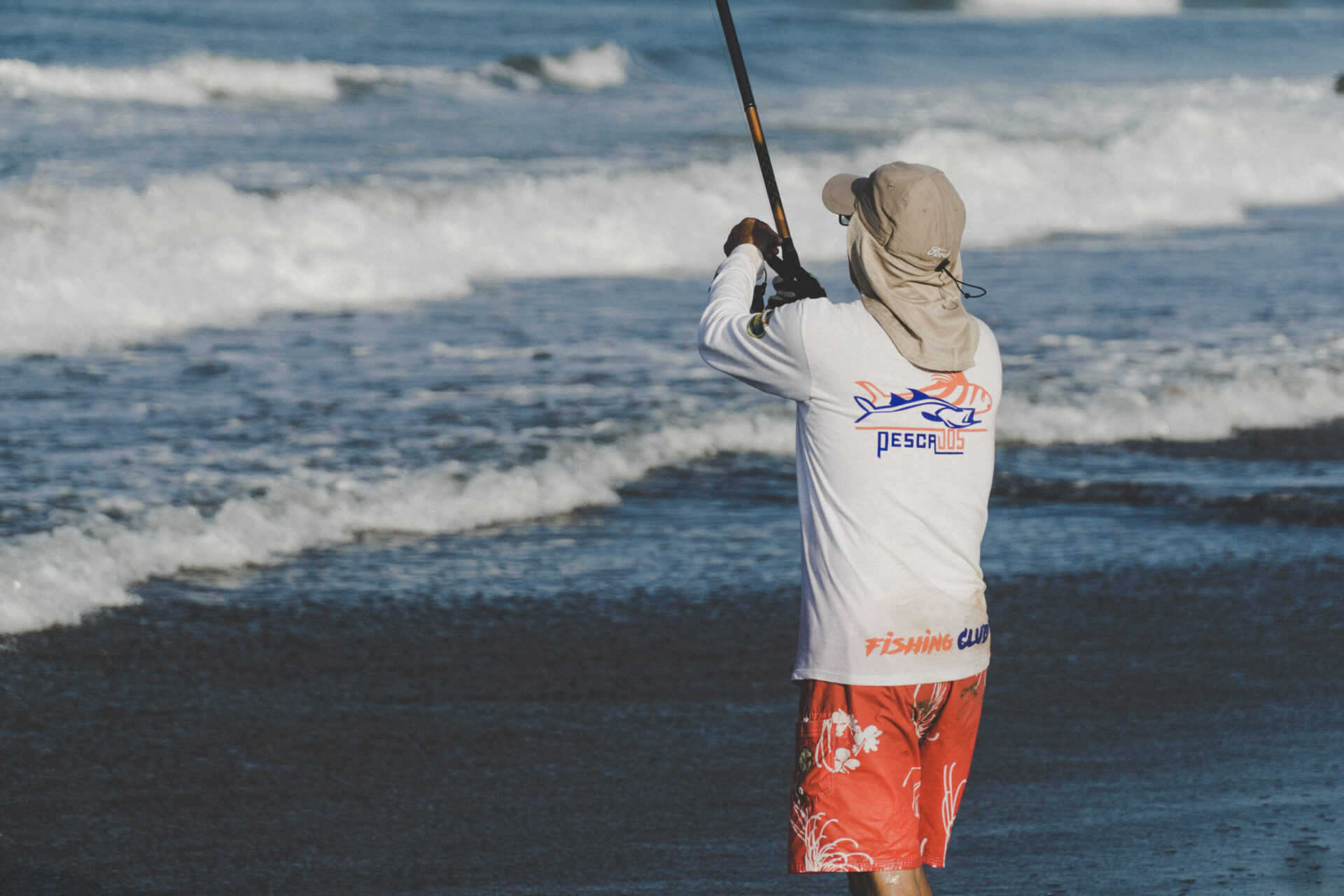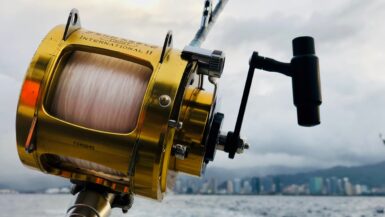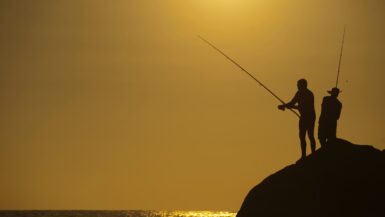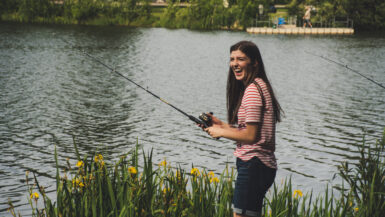Fishing can be a fun and memorable activity for kids and parents alike. From teaching your children the basics of cast and release fishing to equipping them with the right safety gear, there are plenty of things to consider when planning a freshwater fishing trip with your children. But with the right tips and tricks, you and your kids can enjoy a day of fishing without any stress. In this article, we’ll offer some helpful advice on fishing with kids, from choosing bait and tackle to safety measures that can make your experience fun and safe for all.
Preparing to Fish
Fishing with kids is a great way to teach them about the wonders of nature and enjoy a fun outdoor activity together. Before you can start reeling in the big catch, however, you’ll need to make sure that you have all the right fishing supplies. Depending on where you are going and the type of fish you’ll be looking to snag, you may need poles, life jackets, tackle boxes, lures, bait, and fishing nets. Make sure to research the type of freshwater fishing you’ll be doing so you have the right equipment.
Getting Acquainted with Local Fishing Regulations
Before setting out, it’s important to be aware of the local fishing regulations that are in place. This includes the types of fish that are allowed to be caught and any limits on the size or number of fish you can catch in certain areas. This information can typically be found on local government websites, or you may need to contact a representative from the Department of Fish and Wildlife.
Dressing for the Occasion
Let’s face it – no one wants to spend the day soaking wet and miserable. Make sure everyone has the proper clothing for the weather. Dress for success with hats and sunglasses to protect eyes and skin from the sun’s harmful rays. If you’re fishing in the rain, be sure to grab some weather-proof coats and boots to keep you dry.
Planning the Day’s Menu
No matter how hard you’re fishing, you can’t forget to take a break and refuel. Pack plenty of snacks and drinks to make sure your crew stays energized and hydrated throughout the day. If you’ll be out fishing for several hours, you may also want to pack a picnic to enjoy when you’re done. Don’t forget to bring paper plates and garbage bags – it’s important to remember to leave the area in the same condition as you found it.
Dealing with Fish
Although it can be exciting to catch a fish, it’s important to take the proper precautions when handling them. Always be sure to wet your hands before touching a fish – this will help to minimize the slime that can irritate skin. If you plan on keeping your catch, you will also need a stringer or cooler to store them in, and scissors or a knife to scale and gut the fish. Make sure to properly discard any fish guts after you’re done.
Safety First
Finally, fishing with kids requires a lot of patience and extra precaution to ensure their safety. Be sure to check the weather forecast before you head out and follow the lake’s safety regulations. Always wear a life jacket and check buoy lines and weeds for any risky spots that could pose a danger. If you’re going to be fishing in a boat, make sure that everyone on board is wearing a life jacket, and have a first aid kit ready in case of any emergencies.
Safety Guidelines
When fishing with kids, it is important to make sure that safety is your number one priority. Make sure that children know and abide by the basic safety rules:
- Always wear a life jacket when on or near the water, even if the water is shallow.
- Stay together and stay in sight of your group.
- Fishing with kids can be fun, but never leave them unattended near the water.
- Make sure that young children are supervised by an adult at all times.
- Educate yourself and your kids about the risks of fishing, such as hook injuries.
- Be aware of potential dangers, such as strong currents, slippery rocks, and changing weather conditions.
Selecting the Right Gear for Kids
When fishing with kids, it is important to select the right gear for them. Make sure that the rods, reels and bait are age-appropriate for the children. You should also make sure that the gear is well-maintained and in good condition. If you are not sure what type of gear to select, ask a professional fishing guide or an outdoor specialist at a local store.
Teach Kids the Basics of Fishing
Fishing with kids is an opportunity to teach the younger generation the basics of fishing. Some important lessons include understanding the types of freshwater fish in the area, the lures and bait to use, and the basics of casting, reeling and playing a fish. By teaching your children these basics, they will have a more enjoyable and successful experience.
Prepare for Unforeseen Emergencies
Even if you take all the necessary safety precautions, unexpected emergencies can still arise. Before heading out on a fishing trip, make sure that you and your children are prepared for any situation. Make sure that you bring a first-aid kit, extra clothing and supplies, map of the area, a communication device such as a cell phone, and all necessary safety equipment.
Practice Catch and Release
When fishing with kids, you should always practice catch and release. This ensures that the fish population remains healthy and that children will have the chance to catch fish on future trips. Be sure to explain to your children the importance of this practice and demonstrate how to release a fish as quickly as possible.
Fun Activities
Freshwater fishing can be a lot of fun for kids. To maximize their enjoyment, it’s important to choose the right bait. Live bait such as worms, crickets, minnows and grasshoppers are often successful, as are lures like spinners, spoons, and jigs. Whatever bait you choose, make sure it’s one that kids will enjoy using.
Tips for Family Fishing Fun
Fishing can be a great activity for families. Make sure you choose a fishing spot that’s easy for kids to reach and doesn’t require too much hiking or climbing. Bring a picnic lunch and snacks so you can enjoy the outdoors together. Make sure you also have the right fishing gear for the type of fish you are after.
Safety Tips for Kids Fishing
Safety should always be your top priority when fishing with kids. Make sure they wear life jackets while they fish, and stay within sight of you throughout the day. Teach them proper handling techniques for the fish they catch, and remind them to never touch the fish with their bare hands. If you’re fishing in an area with deep waters, be sure to bring a long fishing pole so they can reach the water easily.
Learning Opportunities for Kids
Fishing is a great way to teach kids about nature and wildlife. Talk to them while they fish, and help them identify different types of fish and their habitats. Incorporate some basic lessons about conservation and environmental stewardship. Kids will also learn patience and sportsmanship during their fishing trips.
Making Fishing Memories with Kids
Make sure to bring a camera to capture the memories you’ll make fishing with your kids. Encourage them to take pictures, too. After your fishing trip is over, you can sit down together and create a scrapbook or photo album of all the things you’ve seen and done. This is a great way to help kids remember their fishing adventures and look forward to future ones.
Reel Basics
Fishing with kids can be an exciting and rewarding experience, but it’s important to make sure they are properly equipped and safe. There are some basic tools every child should have when freshwater fishing, including a fishing rod and reel.
How to Choose the Best Fishing Reel for Kids
When choosing the best fishing reel for kids, it’s important to pick one with a light-weight construction that’s strong and durable. An automatic or spinning reel is best for freshwater fishing, as they’re relatively easy to use and require minimal maintenance. They should also have an adjustable drag system and smooth retrieval, as well as ergonomic handles that are well-balanced and comfortable.
Understanding Reel Basics
It’s crucial for anyone fishing with kids to understand the basics of a fishing reel. Casting reels, for example, are equipped with a baitcasting knob that helps guide the line in the direction desired with a single turn of the handle. Spinning reels are simpler in design, requiring only a push of a lever to activate the bail arm and release the line. Once the bait hits the water, the angler then turns the handle to reel in the line.
Other Considerations for Catching Fish
When it comes to catching fish, it’s crucial to have a fishing rod with enough flexibility to help the angler get a good feel for the line and bottom conditions. With the right rod, kids can cast a line far enough to reach the desired spot. The right rods should also have plenty of backbone and strength to help set hooks properly and bring in the catch.
Tips for Teaching Kids About Fishing
When kids are starting out, it’s important to start with simple techniques such as jigging, trolling, and bottom-fishing, as these techniques require minimal effort. As the kids become more comfortable with fishing, more advanced techniques can be introduced. It’s also important to explain the basics of safety when fishing, such as always wearing a life jacket and fishing away from obvious hazards.
By following these tips, the whole family can enjoy a fun, safe, and rewarding freshwater fishing experience together!
Tackle and Gear Needs
Fishing with kids is an exciting and rewarding activity. But before you can get into the fun of fishing, you need to make sure you have the right tackle and gear. Having the right fishing supplies will ensure that your kids can safely and comfortably enjoy their fishing experience. Here are a few items that are essential for any kid angler.
Fishing Rods and Reels
When it comes to fishing gear, the fishing rod is one of the most important pieces of equipment. To ensure your kids can safely and comfortably enjoy their freshwater fishing adventure, make sure you get a rod and reel that is the right size and weight for them. Most sporting goods stores have kids’ rods and reels specifically designed for young anglers.
Bait and Lures
When it comes to bait, you can use worms, crickets, or other live bait. Artificial lures are another great option for kid anglers. They come in a variety of colors and styles and can be used to catch a variety of different fish.
Life Vests
Fishing can be a lot of fun, but it’s also important to make sure your kids are safe. Make sure that your kids are wearing life vests when they are out on the water. This will help protect them should they fall in the water and give them a sense of security while fishing.
Safety Equipment
In addition to life jackets, you should make sure you have a first-aid kit, spare set of clothes, and a whistle with you. This will help you make sure your kids are safe, comfortable, and prepared for any unexpected circumstances.
Miscellaneous Equipment
You’ll also want to make sure your kid anglers have a pair of polarized sunglasses, hat, and sunscreen. This will help them stay safe and comfortable while they are out fishing in the sun. Additionally, you should make sure you have a pair of pliers, a bucket to carry the fish, and a net to help you catch them.
With the right tackle and gear, you and your kids can have a safe and enjoyable fishing experience. Make sure to have the right supplies before heading out to the lake or river – it will make all the difference!
A Fun Day Out for the Whole Family
Fishing with kids is not only a great way to teach them about the environment and proper safety techniques, but also a way for them to enjoy the outdoors and spend quality time together as a family. With the right precautions, such as tilting the rod for kids, using a few simple knots, and always keeping safety gear nearby, parents can make their day on the lake or river an enjoyable and safe one. Fishing with kids can be an incredible way for them to learn about the environment and a great opportunity for families to have fun and make memories together.





Leave a reply